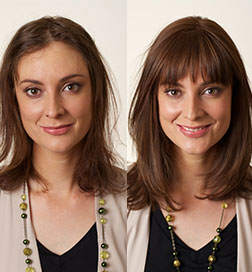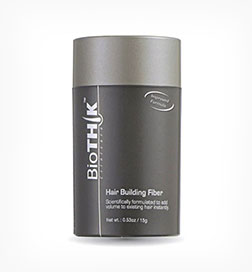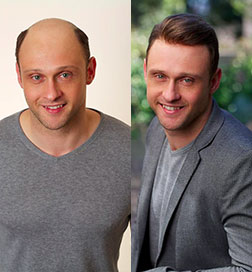Hair loss plagues both men and women in Australia in significant numbers, but only a portion of hair loss sufferers are a good candidate for a hair transplant. But new research by Japanese scientists, growing hair on bald mice, may make hair transplants a viable option for everyone and hair loss a thing of the past. Maybe one day you actually will be able to regow all of the hair that you want to. The video below shows one of the bald mice that they scientists grew several hairs.
Unlike current hair transplant methods, which simply move existing hair follicles from one area of the scalp to another to cover a bald region, the approach would spur the creation of new hair follicles from existing cells say researchers. “It's exciting because it shows a cell-based approach for treating hair loss is maybe feasible,' says George Cotsarelis, a dermatologist at the University of Pennsylvania in Philadelphia. “If this were the case it would allow people with a poor donor area to be able to have hair transplant, previously they would not have been a good candidate” said Andrew Wilson from Transitions Hair.
Not only were Japanese scientists able to regrow hair in the study, which was published April 17 in Nature Communications, but they were able to manipulate the density and colour of the hair as well. “Our study provides a substantial contribution to the development of bioengineering technologies that will enable future regenerative therapy for hair loss caused by injury or by diseases such as alopecia and androgenic alopecia,' researchers wrote in the study. For the experiment the researchers cultivated two different kinds of mice hair follicles and transplanted them on a mouse. Three weeks later, 74 percent of the hair follicles had grown into black hair. When human hair follicles cells were transplanted, human hair grew. The hair continued to regenerate after it fell out due to normal growth cycles.
Hair follicles develop when two different types of cells – epithelial and mesenchymal cells – interact with each other. Epithelial cells grow very quickly and shed, while mesenchymal cells direct epithelial cells to make a follicle. Previously, Tsuji and colleagues had bioengineered follicles and hair shafts in the lab using epithelial and mesenchymal cells from mouse embryos. Until now, it was unclear whether these organized clusters of cells would make normal hair if inserted into mouse skin.
Importantly, the researchers felt they would be able to achieve an aesthetically pleasing result. They were able to ensure hair didn't become ingrown or point in the wrong direction by attaching a nylon thread to the engineered follicles and guiding the hair to grow outward. “You have to make hair that is positioned right,' says Cheng-Ming Chuong, a stem cell and regeneration researcher at the University of Southern California in Los Angeles. Chuong notes that the new study succeeded in getting the follicles to grow in an organized way. Previous studies involving transplanted follicles produced hair that grew in random directions or formed cysts, which isn't very useful clinically. Andrew Wilson, from Transitions Hair Sydney notes that “it is extremely important to have the orientation and direction of the hair correct. In order to recreate a natural result, it must have a natural hair direction and pattern….. it will be interesting to follow how this technology develops to ensure they are able to create a natural hairline and appearance of hair.'
Hair has been regenerated in mice in previous research, such as experiments conducted by scientists at the University of California, Los Angeles and the Veterans Administration in 2011 and by the Kennedy Krieger Institute and Johns Hopkins in 2005. But, unlike the Tokyo University of Science study, those experiments focused on determining the genetic roots of baldness and the role of stress hormones in inhibiting growth.




